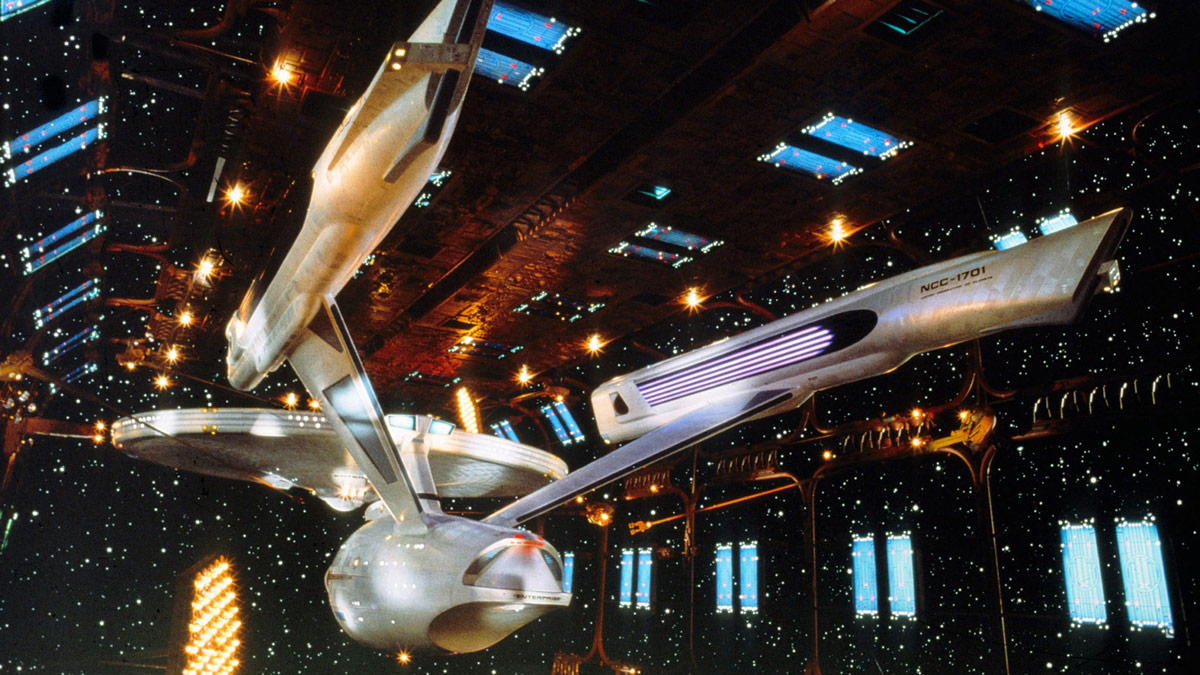
(c) Photofest / Getty Images
The struggles of the special effects staff who created the movie “Star Trek: The Motion Picture” and what they left behind Part 1
Until the movie production begins
In response to growing fan activity, Jeffrey Katzenberg, a producer at Paramount Pictures who owned the rights to Star Trek: The Motion Picture, asked Roddenberry to develop a theatrical version in 1975. However, the script that Roddenberry wrote, "Star Trek: The God Thing," was rejected by Paramount, and although many science fiction writers rewrote it, the project was shelved.
The next project, Star Trek: Planet of the Titans, was developed in 1976. Before the script was even completed, Ralph McQuarrie, a concept artist who had worked on Star Wars (1977), had drawn designs for a new USS Enterprise. Philip Kaufman was chosen to direct, Toshiro Mifune was cast as a Klingon, and there was even talk of commissioning experimental filmmaker Jordan Belson to do special effects, but the project was also cancelled in 1977.
“Star Wars: A New Hope” preview
Paramount's president, Barry Diller, believed that Star Trek: The Motion Picture was best suited to a television series, and asked Roddenberry to develop the project. A script for a series titled Star Trek: Phase II was then considered. In August 1977, science fiction writer Alan Dean Foster proposed the idea of a mysterious mechanical lifeform called "V'Gar," and script editor John Poville came up with the idea that "V'Gar is searching for his creator." After that, twelve episodes were written, and new sets and miniatures(*4) were built and test shoots(*5) were conducted.
However, Michael Eisner, who became president and COO of Paramount in 1976, was shocked by the success of Star Wars and began thinking about changing the project into a theatrical film. The project changed between a TV series and a film four times, and in early January 1978, it was decided to start production of the theatrical version of Star Trek: The Motion Picture.
*4 In September 1977, the visual effects for "Star Trek: Phase II" were commissioned to a company called Magicam. They then began producing miniatures of spaceships and other objects.
Magicam's defining technology was a system that linked a live-action video camera with a periscope camera for miniature filming with a servo mechanism, and used a specially developed chromakey technology called Technimat to realize a highly accurate composite image. The technology was originally developed at Loyola University in the U.S. in 1972, and Paramount president Frank Yablans, who liked new things, saw a prototype demonstration in 1973 and established Magicam as a subsidiary of his company in 1974. Douglas Trumbull also served as a consultant for a year at the time of the company's founding.
The representative works using this compositing system are the TV movie "UFO Close Encounters" (1975), Carl Sagan's science program "Cosmos" (1980), the TV series "American Hero" (1981), and the TV commercial for "Matsushita Electric Technics V55" (1977). Magicam closed in 1982, and some of the staff moved to Apogee.
*5 At this stage, Persis Kambata had also been cast as Aileela, and she actually shaved her head and conducted filming tests.
Robert Wise has been appointed director
After several changes in the directorial field, Robert Wise was selected in March 1978. Wise initially declined the role because he had not seen the TV series, but after being persuaded by Eisner and Katzenberg, he accepted. However, after watching about ten of the series, he decided that the film absolutely needed Leonard Nimoy to appear.
Although the script was still incomplete at this stage, it was already decided that Nimoy would not star in the film - he was unwilling to play Spock and Paramount had not paid him for the secondary use of his character - so Katzenberg begged Nimoy to stay, and he finally agreed.
The film was then cranked in, but because Roddenberry was still revising the scenario, filming proceeded with the script still incomplete. Story meetings were held frequently, revisions were made almost every day, and Nimoy and Shatner proposed and adopted major changes to the ending. However, these frequent revisions to the scenario put a lot of strain on the work of the visual effects team.

